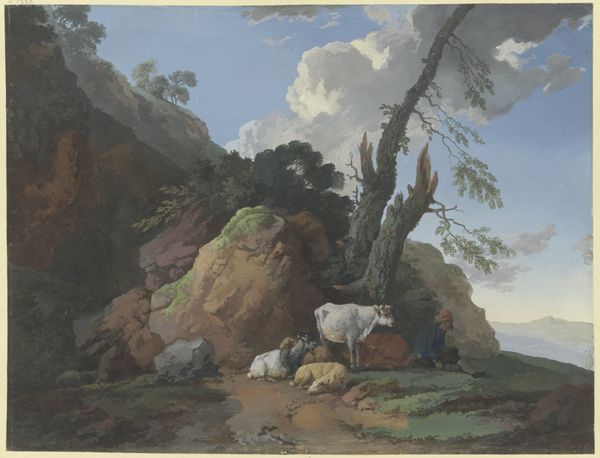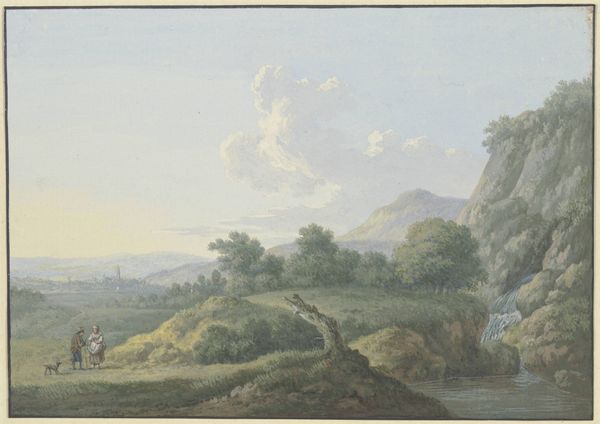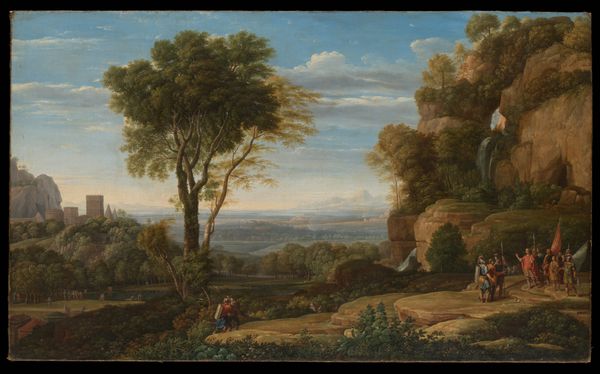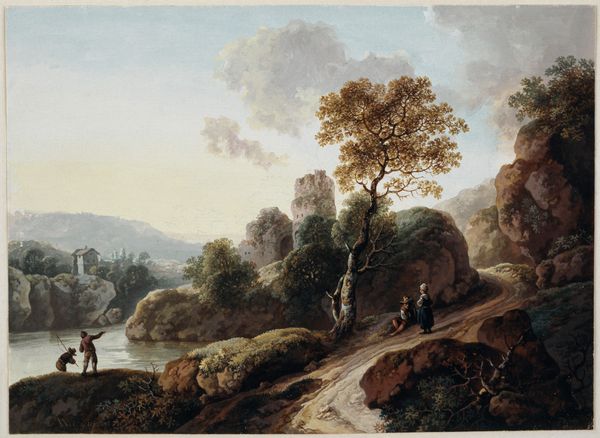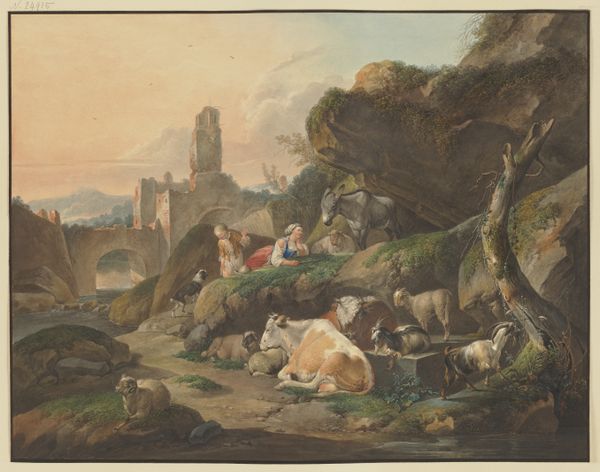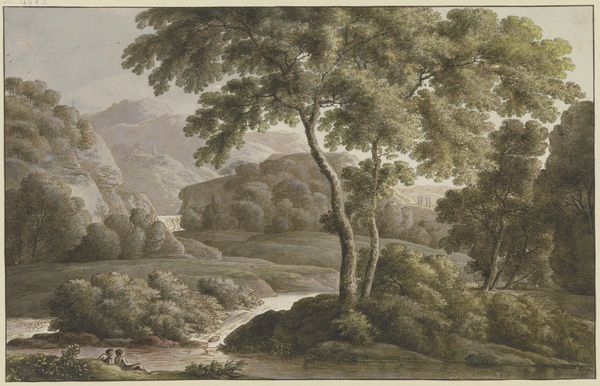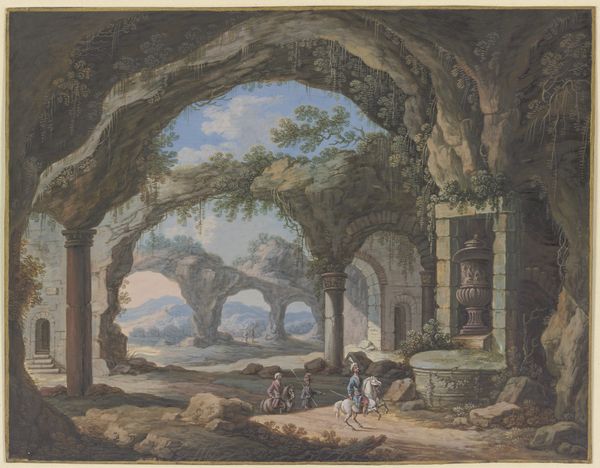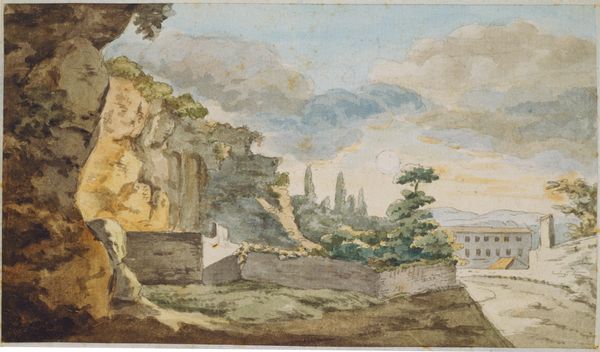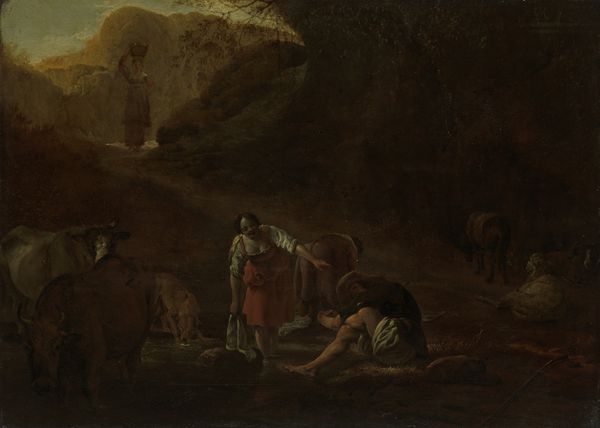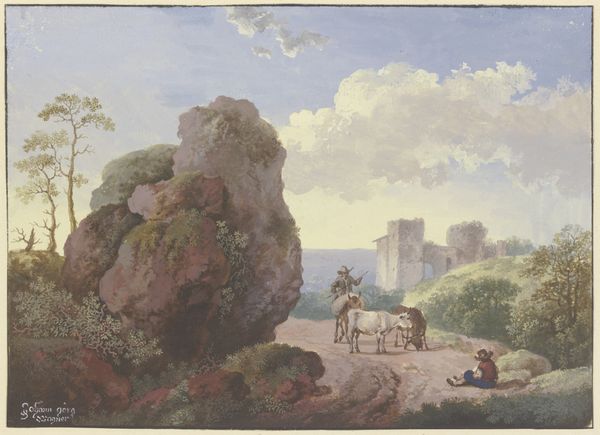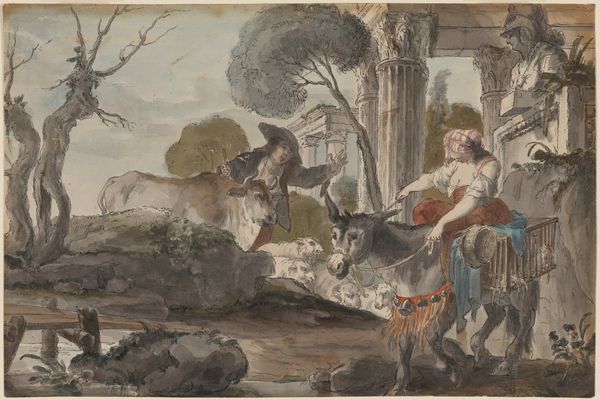
An einem in einen Felsen gebauten Haus trinkt eine Frau aus der Quelle, dabei ein Knabe in rotem Rock; ein halb abgepackter Esel und Vieh sitzen und stehen dabei
0:00
0:00
drawing, painting, paper, watercolor, architecture
#
drawing
#
netherlandish
#
painting
#
landscape
#
paper
#
oil painting
#
watercolor
#
15_18th-century
#
14_17th-century
#
watercolor
#
architecture
Copyright: Public Domain
Editor: Here we have a watercolor and oil painting whose title translates to "In a house built into a rock, a woman drinks from the spring, with a boy in a red coat; a half-packed donkey and cattle sit and stand nearby." The artwork can be found in Städel Museum, Frankfurt. Looking at the scene, I find a strange juxtaposition of domesticity and wilderness. What strikes you when you see this piece? Curator: It’s a fascinating piece that really brings forward questions of class and the construction of pastoral life. Notice how the figures, seemingly a woman and child, inhabit a space that is both natural and carved into the rock – suggestive of a precarious existence lived on the margins. Do you see how the donkey, half-packed, speaks to a journey, possibly displacement or migration? Editor: Yes, I see that now. The cave structure and rough landscape do contrast with the very still, almost posed figures, and domestic animals, giving the scene an unusual tension. Curator: Precisely! And it encourages us to reflect on who gets to define "landscape." Consider that while wealthy patrons often idealized nature in art, here we get a glimpse of the lived reality – labor, potential displacement – inherent to that ideal. The rocky house might suggest an alternative to the grand houses we know. This becomes very relevant when we reflect on topics such as climate gentrification, displacement, access to natural resources, and sustainability. Editor: I never would have looked at this painting that way. It’s usually about appreciating the landscape or composition, so I’m glad that you highlighted social commentary instead. I now find it more evocative thinking about landscape and lived reality coexisting. Curator: Exactly. The visual pleasure shouldn't overshadow the narratives of social and political dimensions that artworks reflect and participate in.
Comments
No comments
Be the first to comment and join the conversation on the ultimate creative platform.
